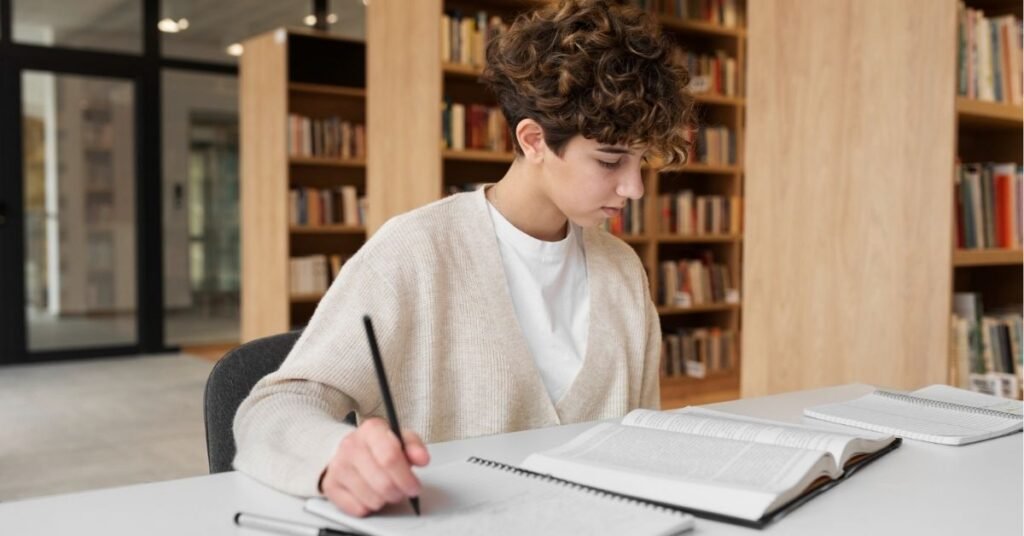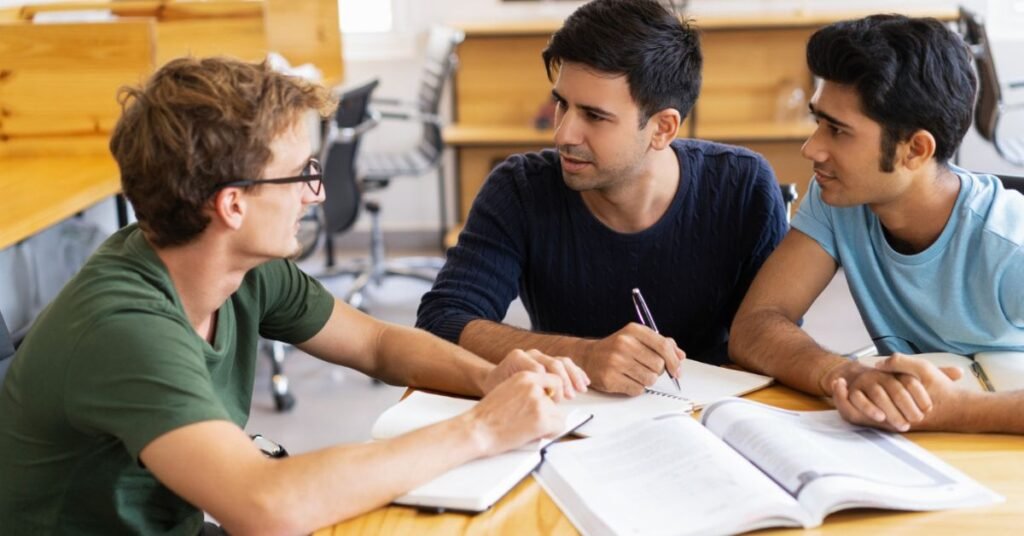“How do students learn best?” is one of the most frequently asked questions by teachers, parents, and students themselves.
While many factors influence learning — from classroom environment to personal motivation — research in cognitive psychology and education consistently points to certain evidence-based strategies that help students retain knowledge, apply it, and perform better academically.
Students learn best when they engage in active retrieval (self-testing), space their study sessions over time, receive timely feedback, and develop metacognitive skills that allow them to plan, monitor, and evaluate their learning.
In addition, classroom practices like clear instruction, worked examples, and active participation play a vital role in supporting deeper understanding.
In this guide, we’ll explore in detail:
- The core principles of how students learn best.
- How learning is maximized in schools through systemic strategies.
- How students learn best in the classroom with practical examples.
- Effective study routines and tools students can use independently.
- Common misconceptions about learning.
- Actionable takeaways for teachers and learners.
- A list of FAQs for quick answers.
How Do Students Learn Best
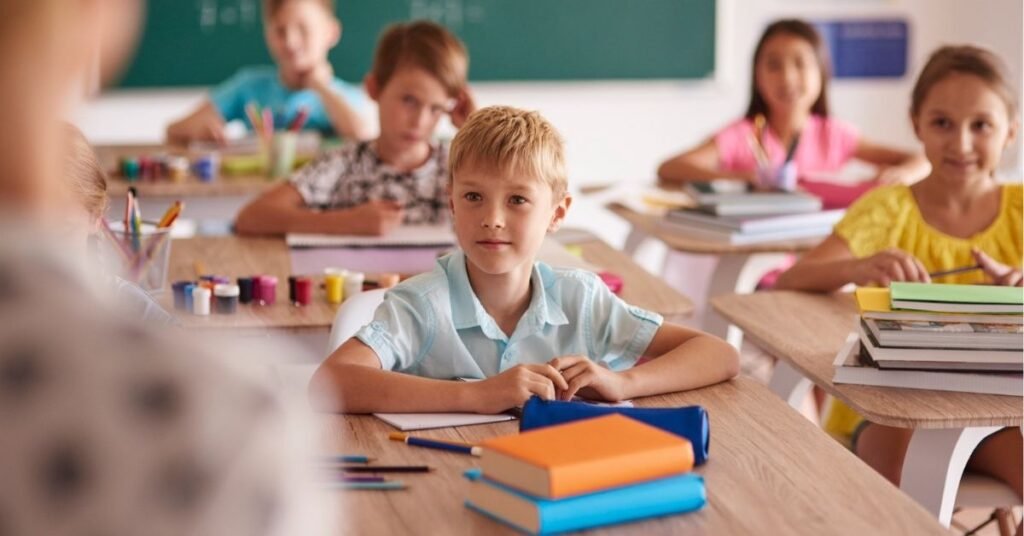
At the heart of learning is the process of taking information, encoding it into memory, and retrieving it when needed. Research shows that not all study techniques are equally effective — and surprisingly, many commonly used methods (like rereading notes or highlighting) are far less effective than more active strategies.
1. Retrieval Practice (Self-Testing)
Retrieval practice is the act of pulling information out of memory rather than just reviewing it. Examples include:
- Using flashcards.
- Taking practice quizzes.
- Writing down what you remember after reading a chapter.
Why it works: Every time you recall information, the memory trace strengthens, making it easier to recall in the future.
Classroom application: Teachers can use short quizzes, exit tickets, or oral recall exercises at the end of lessons.
Student tip: Replace passive rereading with 10 minutes of self-quizzing — it’s far more effective.
2. Distributed (Spaced) Practice
Instead of cramming, spreading out study sessions over days and weeks leads to stronger, long-lasting learning.
Why it works: The brain consolidates knowledge better when learning is revisited periodically rather than packed into a single session.
Classroom application: Teachers can design spiral curricula where key topics are revisited across the term.
Student tip: Use spaced repetition apps like Anki or Quizlet to schedule reviews automatically.
3. Active Learning
Active learning means students do more than just listen — they explain, solve problems, or apply knowledge.
Examples:
- Think–pair–share discussions.
- Group projects.
- Hands-on lab experiments.
- Case studies and simulations.
Why it works: By engaging actively, students process information more deeply, connect ideas, and remember longer.
4. Feedback
Feedback guides learners toward improvement. But timely and specific feedback matters more than vague or delayed comments.
- Effective feedback example: “You used the correct formula but made an error in step 3. Try breaking down the equation into smaller parts.”
- Ineffective feedback example: “Good job” or “Needs work.”
Student tip: Always review feedback and make corrections — reflection is key to improvement.
5. Metacognition (Thinking About Thinking)
Metacognitive strategies teach students to plan, monitor, and evaluate their learning.
Examples:
- Asking: “What do I already know about this topic?”
- Checking: “Did I understand the main idea?”
- Reflecting: “What study method worked best for me this week?”
Why it works: Students become more independent learners when they can judge their own progress accurately.
6. Dual Coding (Using Words + Visuals)
Students learn better when information is presented in both verbal and visual forms.
- A history teacher might pair a timeline (visual) with a lecture (verbal).
- A science teacher might explain photosynthesis using both a diagram and a written explanation.
Student tip: Combine text notes with doodles, flowcharts, or mind maps.
7. Managing Cognitive Load
Students learn best when information is presented clearly and not all at once. Overloading working memory with too many details reduces retention.
Best practice:
- Break lessons into smaller chunks.
- Use worked examples before independent practice.
- Remove irrelevant distractions (like unnecessary animations or background noise).
How Do Students Learn Best in School
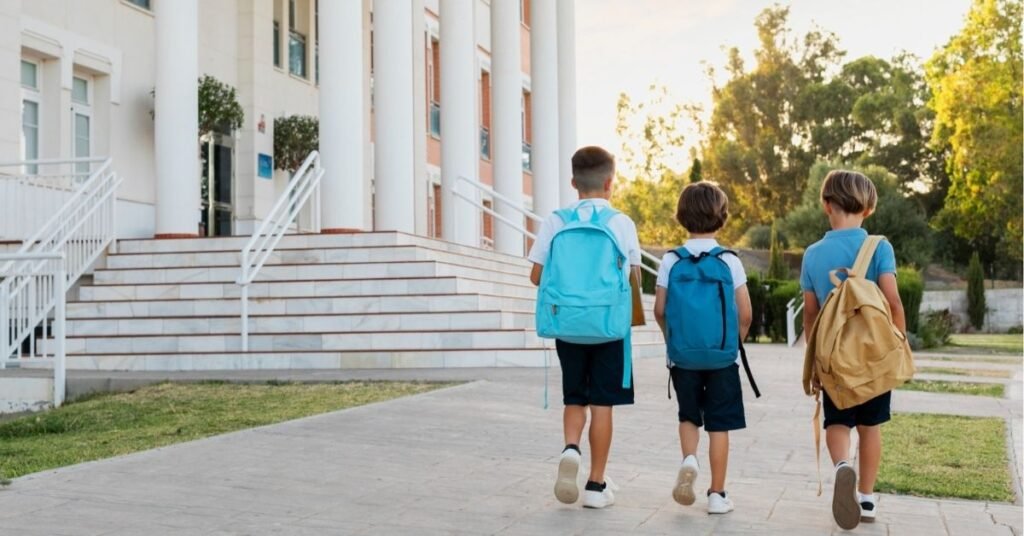
Schools play a central role in shaping how students learn — not only by delivering curriculum but also by creating an environment that supports motivation, curiosity, and critical thinking. A well-structured school system can either enhance or hinder a student’s ability to learn effectively.
Below are the key ways students learn best in school, supported by both research and real-life practices:
1. Establishing Clear Learning Objectives
Students are more likely to succeed when they know exactly what they are supposed to learn and how their progress will be measured.
- Practical application: Teachers should start lessons with clear “I can…” statements (e.g., “I can solve quadratic equations using the quadratic formula”).
- Why it matters: Students stay focused, understand expectations, and are able to self-assess progress.
2. Cultivating a Growth Mindset Culture
Schools that promote the idea that intelligence can grow with effort empower students to embrace challenges.
- Example: Instead of saying “You’re so smart,” teachers can say, “You worked hard on this problem and tried different strategies.”
- Impact: Students become more resilient, persistent, and open to feedback.
3. Frequent Low-Stakes Assessments
Instead of relying only on midterms and finals, schools should integrate short, low-pressure quizzes and activities.
- Benefits:
- Reduce test anxiety.
- Provide immediate feedback.
- Reinforce retrieval practice.
- Example: A quick 5-question quiz at the start of every math lesson to review last week’s concepts.
4. Integrating Technology Effectively
When used purposefully, technology can transform school learning.
- Examples of effective use:
- Learning management systems (Google Classroom, Moodle) for resource sharing.
- Interactive simulations in science classes.
- Digital flashcards for language learning.
- Caution: Tech should enhance — not replace — strong teaching practices.
5. Building Collaborative Learning Opportunities
Learning is social. Schools that emphasize group projects, peer teaching, and discussion-based activities help students develop communication and teamwork skills alongside academic knowledge.
- Example: In history class, students can work in teams to debate the causes of a historical event.
- Benefit: Peer explanation is one of the most powerful ways to reinforce understanding.
6. Differentiation and Inclusive Practices
Students learn best when teaching addresses different ability levels, backgrounds, and needs.
- Strategies:
- Provide multiple ways to access content (visuals, texts, audio).
- Allow students to demonstrate learning in different formats (presentations, essays, projects).
- Result: Every student feels supported and capable of success.
7. Encouraging Healthy Routines
Academic success is linked to sleep, nutrition, and physical activity. Schools that emphasize healthy routines (like later start times, PE, or mindfulness programs) see better focus and performance among students.
Takeaway for Schools
Students learn best in school when educators:
- Set clear goals,
- Provide low-stakes assessments,
- Encourage collaboration,
- Use technology wisely, and
- Foster a growth mindset culture.
In short, effective schools don’t just teach content — they create learning environments that empower students to thrive.
How Do Students Learn Best in the Classroom
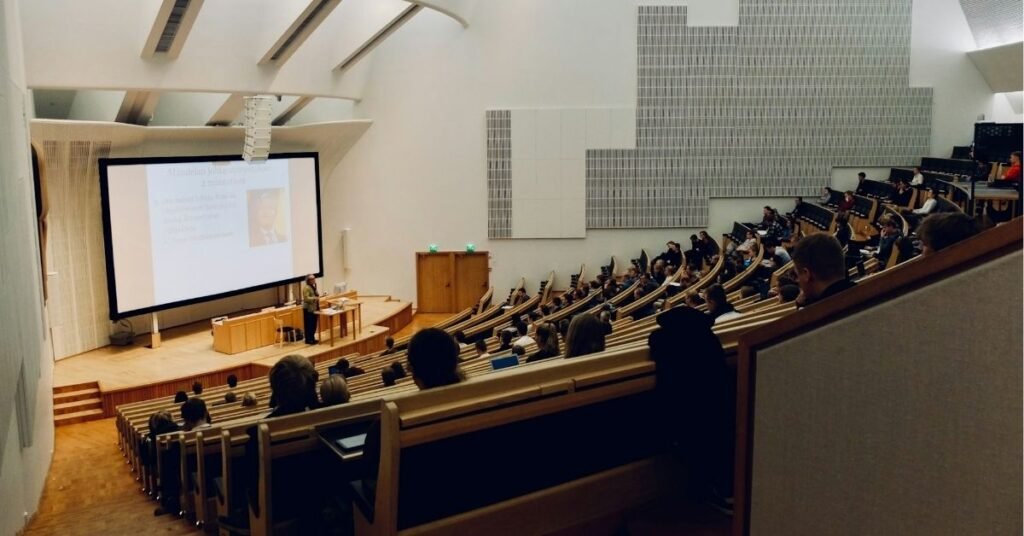
While schools set the stage, the classroom is where the magic happens. The way teachers interact with students, deliver lessons, and structure activities has the most direct impact on learning outcomes.
Here’s how students learn best inside the classroom:
1. Engaging Lesson Openings
The start of a lesson sets the tone.
- Best practices:
- Begin with a thought-provoking question.
- Use a short real-world example or story.
- Connect the lesson to prior knowledge.
- Why it matters: Students pay attention more when they see relevance and curiosity is sparked.
2. Using Retrieval Practice Throughout the Lesson
Retrieval shouldn’t be saved for exams — it should happen during every class.
- Examples:
- “Turn and tell your partner everything you remember from yesterday’s lesson.”
- Mini whiteboard quizzes during class.
- End-of-class exit tickets.
- Impact: Keeps knowledge active and prevents forgetting.
3. Interleaving and Varied Practice
Instead of practicing the same type of problem repeatedly, students should practice mixed problems.
- Example: In math, instead of doing 20 problems on only fractions, mix in fractions, percentages, and ratios.
- Why it helps: Students learn to choose the correct method, not just memorize one procedure.
4. Clear and Concise Explanations
Cognitive science shows that students can only process so much information at once. Overloading them reduces learning.
- Best practices:
- Use step-by-step worked examples.
- Break explanations into smaller chunks.
- Pause to check for understanding before moving on.
5. Active Participation
Students learn best when they do something with the material instead of just listening.
- Examples of active learning activities:
- Problem-solving in pairs.
- Debates or role-playing scenarios.
- Hands-on science experiments.
- Benefit: Deepens understanding and creates long-term retention.
6. Feedback That Feeds Forward
Feedback should not only identify mistakes but also guide the next steps.
- Effective feedback examples:
- “You identified the right formula, but check your calculation in step 2.”
- “Great essay structure — next time, work on providing more evidence.”
- Classroom practice: Peer-review sessions, teacher one-on-one check-ins, or quick annotations on assignments.
7. Reflection and Metacognition
The end of class is a valuable time for reflection.
- Reflection prompts teachers can use:
- “What’s one thing you learned well today?”
- “What’s one question you still have?”
- “What strategy did you use that worked best?”
- Impact: Students learn to monitor their own progress and become more independent learners.
8. Building a Supportive Classroom Culture
Emotional safety matters as much as intellectual challenge. Students learn best in classrooms where:
- Mistakes are treated as learning opportunities.
- Effort is praised, not just outcomes.
- Respectful discussions are encouraged.
A positive classroom climate boosts motivation, engagement, and persistence.
Takeaway for Classrooms
Students learn best in the classroom when lessons are active, engaging, clear, and reflective, and when teachers create a safe, supportive, and feedback-rich environment.
The classroom is not just a place for knowledge delivery — it’s a space where curiosity is nurtured, mistakes are embraced, and learning becomes meaningful.
Study Strategies for Students
Learning doesn’t stop in the classroom. Students can maximize learning with smart self-study habits.
Note-Taking Methods
- Cornell Notes: Divide the page into cues, notes, and summary.
- Mind Mapping: Great for visual learners and complex topics.
- Outline Method: Best for structured subjects like history.
Digital Tools for Learning
- Flashcard apps (Anki, Quizlet) for retrieval practice.
- Google Docs for collaborative notes.
- Notion or Evernote for organizing resources.
The Error Log Method
After practice tests, students should log mistakes in a dedicated notebook: question, error type, and correct method. Reviewing error logs improves exam performance.
Weekly Study Cycle Example
- Day 1: Attend lecture, take notes.
- Day 2: Self-quiz and summarize.
- Day 4: Short spaced review.
- Day 7: Practice problems + error log.
- Repeat weekly.
Common Misconceptions About Learning
- Myth 1: Rereading is the best study method.
Reality: Active recall is far more effective. - Myth 2: Cramming works long-term.
Reality: It helps short-term recall but fails for exams weeks later. - Myth 3: Students have fixed “learning styles.”
Reality: Evidence does not support tailoring teaching to “visual” or “auditory” learners. All students benefit from multiple modes.
FAQs:
Q: How do students learn best overall?
Students learn best through active retrieval, spaced practice, feedback, and reflection.
Q: How do students learn best in school?
Clear goals, low-stakes quizzes, and inclusive teaching practices help students learn best in school.
Q: How do students learn best in the classroom?
Classrooms that use worked examples, retrieval activities, and timely feedback create the best learning conditions.
Q: Which study methods are least effective?
Rereading and highlighting without active recall are less effective.
Q: What two strategies have the strongest evidence?
Retrieval practice (self-testing) and spaced repetition are the most powerful.
Conclusion:
The question “How do students learn best?” doesn’t have a one-size-fits-all answer, but decades of research highlight a clear set of strategies: retrieval practice, spacing, active engagement, feedback, and metacognition.
When schools and classrooms adopt these methods consistently — and when students apply them in their own study routines — learning becomes deeper, longer-lasting, and more meaningful.
Teachers, parents, and students alike can start small: one quiz, one spaced review, one self-reflection. Over time, these simple habits add up to significant improvements in learning outcomes.
